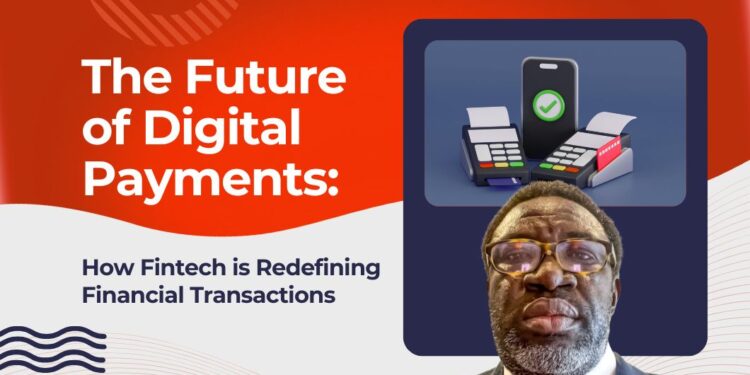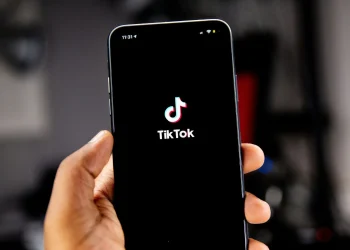Introduction
The global financial landscape is in the midst of a profound transformation. Digital payments, once a convenience, have become a necessity driven by rapid technological innovation, evolving consumer expectations, and a surge in digital-first lifestyles. At the heart of this revolution lies financial technology (fintech), an ecosystem of companies leveraging advanced technology to make financial services faster, cheaper, and more inclusive.
From contactless payments and real-time transfers to blockchain-powered transactions and embedded finance, fintech is not just changing how we pay; it’s reshaping the very concept of money and value exchange. According to a McKinsey report, global payments revenue is expected to reach $3.3 trillion by 2027, with fintech-driven innovations accounting for a significant share of this growth.
In this article, we explore the future of digital payments, the key technologies driving this evolution, the impact on businesses and consumers, and what lies ahead for financial transactions in the next decade.
The Evolution of Digital Payments
Digital payments have come a long way from their humble beginnings. Initially, online banking and card payments were considered groundbreaking. Today, we have instant payments, mobile wallets, cryptocurrencies, and buy now, pay later (BNPL) solutions that redefine flexibility and convenience.
Early Stages: The Birth of Digital Transactions
- 1990s: Introduction of internet banking and online bill payments.
- 2000s: Widespread adoption of credit/debit cards for e-commerce.
Modern Era: Fintech Takes the Lead
- 2010s: Mobile wallets (Apple Pay, Google Pay), peer-to-peer (P2P) transfers (Venmo, PayPal), and contactless cards gained popularity.
- 2020 onwards: COVID-19 accelerated the shift to cashless societies, driving demand for touch-free and instant payment solutions.
Fintech Innovations Shaping the Future of Digital Payments
The next generation of digital payments is defined by speed, security, interoperability, and personalization. Let’s look at the technologies leading this transformation:
1. Real-Time Payments (RTP)
Consumers and businesses demand instant settlement, whether for salary payments, bill splitting, or e-commerce. RTP networks are becoming the standard worldwide:
- Examples: India’s UPI, the UK’s Faster Payments, and the U.S. FedNow service.
- Impact: No waiting for funds to clear; immediate confirmation boosts trust and efficiency.
2. Contactless and QR Code Payments
Contactless cards and QR-based payments dominate retail, especially in Asia and Africa. They provide:
- Speed: Transactions completed in seconds.
- Hygiene: A major driver during the pandemic.
- Accessibility: QR payments require only a smartphone—no expensive hardware.
3. Blockchain and Cryptocurrency Payments
Blockchain enables secure, transparent, and decentralized transactions without intermediaries.
- Benefits:
- Lower transaction fees.
- Cross-border transfers in minutes instead of days.
- Future Trend: Stablecoins and central bank digital currencies (CBDCs) will bridge the gap between crypto and traditional finance.
4. Biometric Authentication
Security is paramount in digital payments. Fingerprint scans, facial recognition, and voice ID are replacing passwords and PINs.
- Advantage: Faster authentication without compromising safety.
- Example: Apple Pay’s Face ID and Mastercard’s biometric card.
5. Embedded Finance
Payments are becoming invisibly embedded within platforms we already use.
- Examples:
- Ordering food via an app with in-app payments.
- Financing options like BNPL are integrated at checkout.
- Impact: Consumers complete transactions without switching apps or entering card details.
6. Artificial Intelligence (AI) and Machine Learning
AI enhances payments by:
- Detecting fraud in real-time.
- Offering personalized spending insights.
- Enabling voice-activated transactions via virtual assistants.
7. Open Banking and API-Driven Ecosystems
Open banking allows fintechs to connect directly with banks via secure APIs.
- Outcome: Instant account-to-account payments without relying on card networks.
- Consumer Benefit: More choices and better control over financial data.
How Fintech is Redefining Consumer Experience
Fintech’s influence on digital payments is most visible in the consumer experience:
- Convenience: Instant transfers, one-click checkouts, and voice-enabled payments.
- Personalization: Tailored offers, budgeting tools, and financial health insights.
- Lower Costs: Reduced fees for remittances and merchant transactions.
- Greater Access: Serving unbanked populations through mobile-first solutions.
Impact on Businesses and Merchants
Businesses benefit from:
- Lower Processing Costs: Avoiding high card interchange fees via A2A payments.
- Global Reach: Accepting crypto and cross-border instant payments.
- Better Customer Engagement: Integrated loyalty and rewards in digital wallets.
- Faster Settlements: Improving cash flow with real-time payments.
Digital Payments and Financial Inclusion
Fintech is a catalyst for financial inclusion, particularly in emerging markets:
- Mobile Money Revolution: In Africa, services like M-Pesa enable payments without bank accounts.
- Micro-Payments: Helping gig workers and small merchants access instant earnings.
- Credit Access: Alternative credit scoring based on transaction history and digital footprints.
Challenges in the Digital Payment Revolution
While the future is promising, challenges persist:
- Cybersecurity Risks: Increased digital activity invites sophisticated attacks.
- Regulatory Compliance: Balancing innovation with consumer protection.
- Interoperability Issues: Fragmented systems create friction in global payments.
- Consumer Trust: Skepticism about data sharing and privacy concerns.
The Road Ahead: Key Trends for the Next Decade
The future of digital payments will be shaped by technology, regulation, and consumer behavior. Here are the trends to watch:
1. Cashless Economies
Countries like Sweden and China are approaching a fully cashless society, and more nations will follow.
2. Rise of Central Bank Digital Currencies (CBDCs)
Governments worldwide are piloting CBDCs to create secure, sovereign digital currencies.
3. Payment-as-a-Service (PaaS) Platforms
Banks and fintechs will offer plug-and-play payment infrastructure to businesses via APIs.
4. Invisible Payments
The ultimate goal: payments so seamless that they disappear into the background, like Uber’s ride experience.
5. Sustainable Payments
Eco-friendly initiatives, digital receipts, carbon-neutral transactions, and blockchain-powered transparency will gain traction.
Conclusion
The future of digital payments is not about replacing cash, it’s about creating a frictionless, secure, and inclusive financial ecosystem that works for everyone. Fintech innovations such as real-time payments, embedded finance, and blockchain are dismantling traditional barriers and enabling a world where payments are instant, borderless, and intelligent.
As we move toward 2030, digital payments will become invisible yet omnipresent, embedded into every aspect of life from shopping and entertainment to mobility and healthcare. For consumers, this means unparalleled convenience and personalization. For businesses, it’s an opportunity to redefine engagement, reduce costs, and expand globally.
The question is no longer if fintech will reshape financial transactions; it already has. The real question is how fast businesses and regulators can keep up with a world where money moves at the speed of thought.















